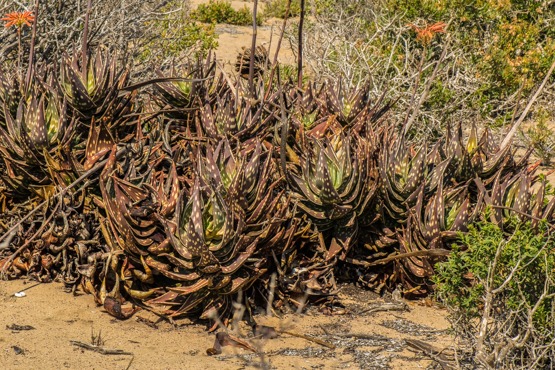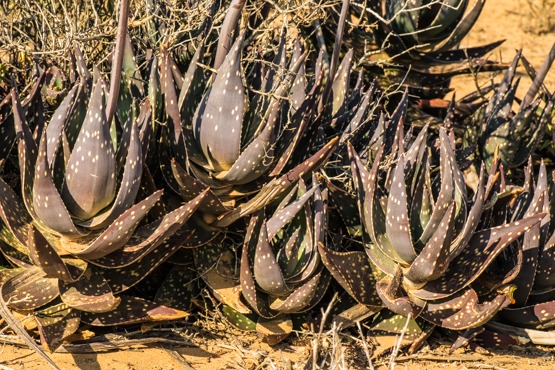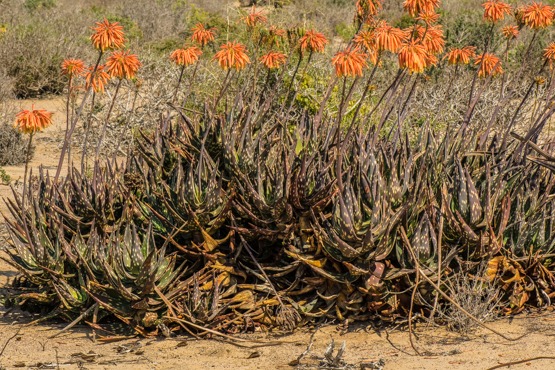This species only occurs on the very dry sandy* coastal plain on the west coast of South Africa, from the mouth of the Orange river in the north to Lambert’s Bay in the south.
Most of the moisture in this narrow strip is provided by mist from the Atlantic. As a result of mining activities and overgrazing, the species is considered to be vulnerable.
The plants form dense groups 15-40 cm tall. These consist of numerous creeping stems up to 1 m long of which only the leafy upper 20-30 cm are erect. The leaves are up to 20 cm long.
Flowering takes place from July in the north to January in the south.
Juvenile plants differ greatly in appearance, having thin stems with long internodes and small leaves. This is the form most often seen in cultivation, where it is often grown as a hanging plant.
*arenicola = sand dweller.




Hello Frans,
Does this mean that the plant that I have grown for over 15 years still is in the juvenile stadium? Interesting, I would like to know what triggers it to move on to the mature stadium! Light? Perhaps stop cutting pieces off for friends (this must be like overgrazing:-)
Groeten, Robert
Hello Robert,
Good to hear from you and thanks for the comment. If your plant is of the type that normally occurs in cultivation (small leaves, long internodes) it still is in the juvenile stage. What triggers the transition to the mature stage I don’t know, but it might well be light or heat.